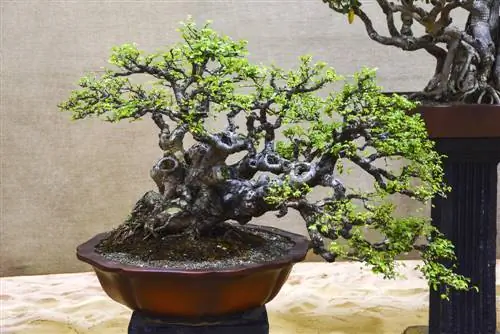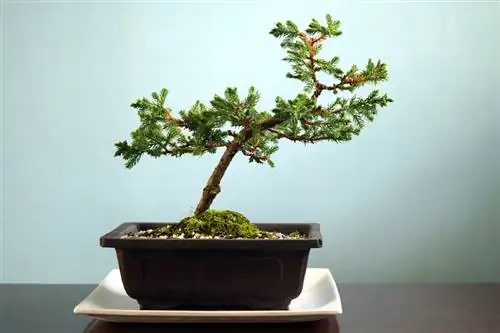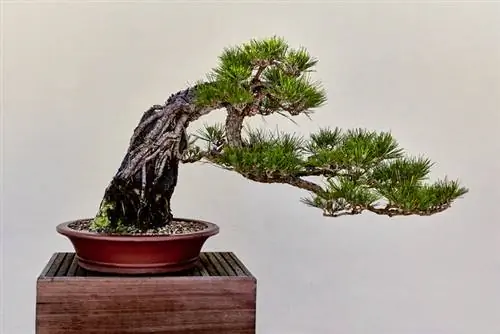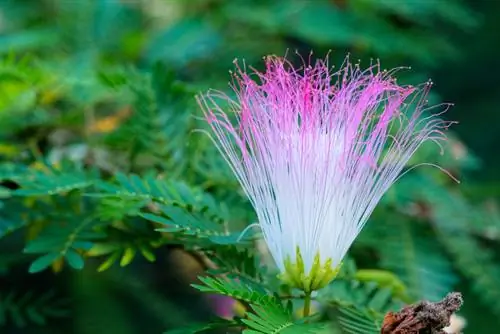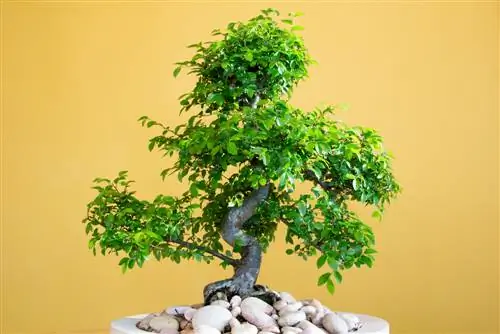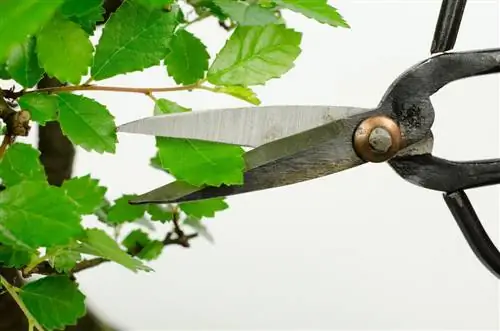- Author admin [email protected].
- Public 2023-12-16 16:46.
- Last modified 2025-01-23 11:21.
The Chinese elm is considered the most popular type of elm for keeping as a bonsai. It is possible that she was born with this trait because she comes from Southeast Asia. The deciduous tree impresses with its fine branches and numerous small leaves, which create a particularly attractive picture in the pot. Convince yourself of the beauty of a Chinese elm as a bonsai and try it out. The following guide gives you valuable tips for care.
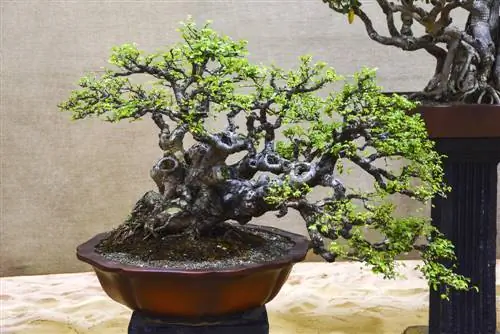
How do I care for a Chinese elm as a bonsai?
Caring for a Chinese elm as a bonsai includes placing it in a sunny location, regular watering without waterlogging, fertilizing with mineral fertilizers and organic fertilizers, pruning to promote branching, repotting in spring and plant protection measures in case of pest infestation.
Location
Place your Chinese elm in a sunny location if possible. If necessary, your tree will also develop well in partial shade. In addition, Chinese elms can even tolerate light frost. Winter hardiness depends on the exact origin of the plant. Check with your nursery. If you buy an indoor bonsai there, you should overwinter it indoors to be on the safe side. Temperatures of 0-10°C are ideal. Depending on the temperature, your Chinese elm may shed its leaves. Don't worry, the leaves will grow again next spring.
Pouring
When watering, the key is to prefer regularity to extremes. The substrate should be permanently moist. You should counteract waterlogging and long dry periods.
Fertilize
Promote the growth of your Chinese elm with a conventional liquid mineral fertilizer (€9.00 on Amazon) mixed with organic fertilizer. The only time that additional nutrients are not recommended is in winter.
pruning
A Chinese elm tolerates severe pruning very well. You can also use wires to maintain the shape.
- when cut regularly, many branches form
- The Chinese elm sprouts quickly again
- when three to four nodes have formed, cut the tree back to one or two leaves
- late autumn is recommended for radical procedures
Repotting
Repotting is best done in spring. Changing the pot regularly is particularly important for young specimens. You can extend the distances later. Root pruning prevents your Chinese elm from developing excessive runners.
Plant protection
Simple pesticides or spraying the leaves with water help against pests. Please note that increased humidity promotes the infestation of gall mites and scale insects.
Note: Want to propagate your Chinese elm? It is best to use cuttings for this. Experience has shown that these have a greater chance of success than growing from seeds. The optimal time for obtaining and planting the cuttings is summer.

